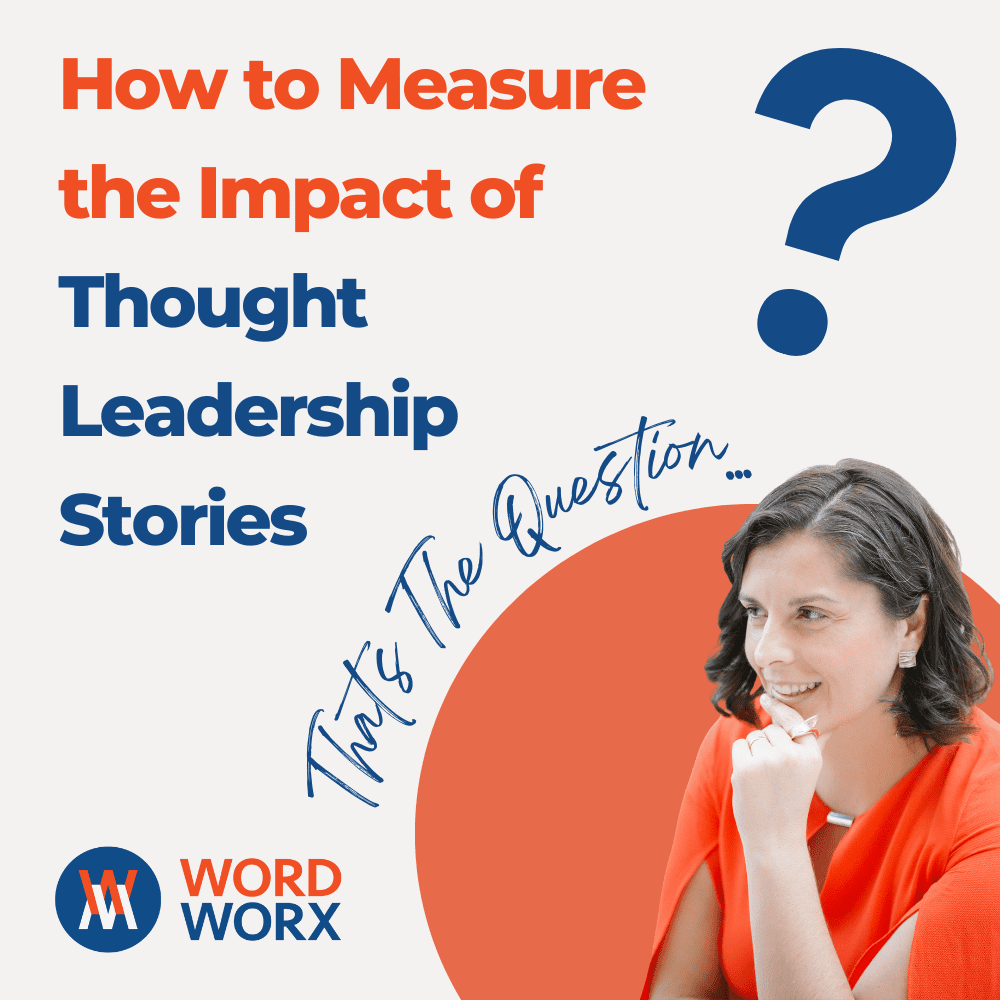My clients often ask me about how to measure the impact of the thought leadership stories I ghostwrite. There’s no easy answer here! Measuring the impact can be challenging, as it often involves qualitative aspects that are difficult to quantify. However, here are some of my approaches you can consider to measure the impact of thought leadership stories:
Engagement Metrics
You can track the engagement levels of your thought leadership content, such as the number of views, likes, shares, and comments on social media or on your website. This can indicate the resonance and interest generated by your content.
Website Traffic and Conversion Rates
You can also monitor website traffic to the thought leadership pieces and track how thought leadership content contributes to increased traffic, time spent on the site, and conversion rates. You can analyse the behaviour of visitors who engage with thought leadership content and see if it leads to desired actions, such as downloading resources, subscribing to newsletters, or making purchases.
Social Media Reach and Influence
Most social media platforms have decent analytics reporting tools where you can measure the basics, including the reach and impact of your thought leadership content. Look at the number of followers, shares, retweets, and mentions, and analyse the sentiment and engagement levels of the conversations generated.
Thought Leadership Surveys
Another option when thinking about how to measure the impact of thought leadership stories is through surveys. Conduct surveys or interviews with your target audience to assess the perception and influence of your thought leadership efforts. Ask specific questions about how your thought leadership content has impacted their decision-making, perception of your brand, or willingness to engage with your organisation.
Lead Generation and Sales Attribution
Monitor leads and sales generated through thought leadership content by tracking referral sources and conversion paths and attributing revenue to specific thought leadership assets or campaigns.
Thought Leadership Partnerships and Speaking Engagements
Evaluate the quality and number of partnerships or speaking opportunities that arise from your thought leadership efforts. Assess the value and impact of these collaborations regarding reach, influence, and industry positioning.
Customer Feedback and Testimonials
Collect feedback and testimonials from customers who have engaged with your thought leadership content. Understand how it has influenced their perception of your organisation, decision-making, or loyalty.
Media Mentions and Industry Recognition
Track media mentions, press coverage, and awards received for your thought leadership initiatives. This can provide an external validation of your expertise and influence in your industry.
When it comes to measuring the impact of thought leadership stories, it’s important to know that being consistent is key to success. Consistency is a crucial element when measuring the impact of thought leadership. By consistently producing and promoting thought leadership content, you can establish a continuous presence and build a loyal audience.
Over time, this consistency allows you to track and compare key metrics, identify trends, and measure the growth and impact of your thought leadership efforts more effectively. It also helps maintain a consistent brand image and positioning within your industry, reinforcing your authority and influence. Maintaining consistency in creating and delivering thought leadership content is essential for accurately measuring its long-term impact.
Are you keen on learning more about how to measure the impact of thought leadership stories? Or perhaps you’d like to hear more about my approach when it comes to writing thought leadership content? Feel free to drop me a line: info@elizabethjoss.com.

